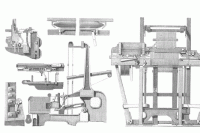This year officially marks the bicentenary of the Luddite movement in the West Riding of Yorkshire. In 1812, the area around Huddersfield saw probably the worst violence, with pitched battles between skilled croppers, under threat from new mechanised technology and textile mill owners backed by government forces.
Although clearly a fraught period, industrialisation actually led to Huddersfield becoming globally renowned for its woollen cloth, bringing prosperity to the whole region.
Nothing lasts forever, though, and the last big mills shut down in the mid-20th century as bulk production moved to India and the Far East.
But in that continual spirit of rebirth, some of it survived. In a marketplace dominated by the new manufacturing superpowers, it was forced to adapt and carved out a niche producing the very highest-quality fabrics and pioneering new technologies in textile manufacture.
Recognising the growing potential in high-end products, West Yorkshire’s textile bosses came together in 1999 to establish the Textile Centre of Excellence in Huddersfield, with a broad remit.

The Engineer archive contains quite a comprehensive history of the development of higher levels of automation in loom operation.
The 4 December 1868 issue covers a patent for a perpetual motion loom by John Bullough from Accrington.
‘Notwithstanding the state of perfection we have been in the habit of thinking the power loom has been brought to by the invention of the weft fork, the loose reed, the stop rod and the self-acting temple, it is none the less a fact that one third to one sixth of the times of every calico loom is lost owing to two prominent defects, while the cry has been constantly for more and more speed, until looms are now run at what many in the old school call “mad speeds” this fact of so much time being lost in stoppages seems to have been overlooked.
‘Of the large number of patents taken out almost weekly for improvements in looms, very few attempt to cope with the conspicuous defect of the loom having to stop every time the weft breaks — on average every three minutes during the day — while not a single attempt has hitherto been made to remedy the still greater defect of being compelled to stop the loom to piece and draw in warp threads that break.
‘The loom that we illustrate above professes to overcome both these defects.’





Nanogenerator consumes CO2 to generate electricity
Whoopee, they've solved how to keep a light on but not a lot else.